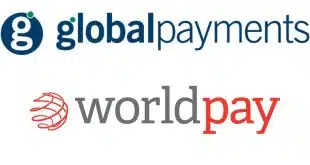Following the audacious gatecrashing of the incumbent-payments party, MCX should have been king of the world. Instead, what occurred was an extended period of retrenchment.
We have recently witnessed the likely demise of yet another attempt at cracking the mobile-payments nut. For many, the implosion of Merchant Customer Exchange LLC’s CurrentC wallet venture was no great surprise. To be sure, MCX says it will live on in association with JPMorgan Chase’s Chase Pay wallet, due out later this year. But its grand ambitions for payments dominated by retailer interests are effectively moribund.
The payments world expected revolution, but almost immediately the cracks started to show that this plucky band of retailers was not a happy family.
Fissures in the MCX foundation showed at the first Money20/20 conference in 2012, where Mike Cook, Wal-Mart’s representative for MCX, made this statement:
“Think about how easy it will be to disintermediate financial institutions. I do not think they even see this coming…”
While this brought audible gasps from the audience, what was also noticeable was the obvious discomfort of fellow MCX representatives who sat on stage with him. If Mike Cook could have kicked the Money20/20 amps over and stagedived into a terrified crowd of suits, I think he would have.
Following the audacious gatecrashing of the incumbent-payments party, MCX should have been king of the world. Instead, what occurred was an extended period of retrenchment. Rumors of infighting abounded, technology-platform vendors came and went, and sexier payment initiatives tipped the balance for the de facto payment technology to near-field communication over the quick-response codes CurrentC depended on. With a handful of high-profile defections from MCX members to Apple Pay acceptance (Best Buy, Rite Aid), MCX limped on to this May, when its chief executive made a Monty Pythonesque “we’re not quite dead yet” statement.
MCX, as we (barely) knew it, has gone. So what makes the difference between consortia that succeed and those that fail? It’s not the first payment-industry consortium to wither, and almost certainly not the last. The unfortunately named Isis/Softcard also failed to launch. And a European operator-driven consortium, Simpay, met a similar fate in around 2006. However, there have been some payment-industry consortia that have been wildly successful: Visa and MasterCard, Early Warning, SWIFT. For some such as clearXchange and Plenti, the jury remains out.
There are controllable and uncontrollable factors relating to the fate of a consortium.
Controllable Factors
– Purpose. Fundamentally, what is the reason for a consortium? A need for a common standard and interoperability? Collective bargaining? Further, is there consensus among members on this common goal? There were two MCXs, one a happy collective of retailers that were looking to launch their own payment system with some nice networking benefits like loyalty and rewards, and the other a rabid badger looking to bite incumbent payments in the ass. What it wanted to be when it grew up vacillated between these two poles. And much the same could be said of Softcard, which pivoted within the first year from being a truly alternative payment network running on Discover’s rails to a much watered-down “we’ll play with anyone.” Clarity of vision is critical.
– Execution. When MCX was announced in 2012, it was seen as being at the vanguard of payments innovation. Since then, we’ve had blockchain, Uber, commercial drones, Alexa, and driverless cars. MCX should have committed while they had the momentum and could have iteratively innovated to stay abreast of technological and cultural trends.
– Membership. The retailers under the MCX umbrella overlapped competitively, which undoubtedly caused friction. In particular, Wal-Mart, as a retailer that competed in every segment of the rest of the members, was notably feisty. Softcard, as a consortium of mobile operators, was almost immediately destined to end badly. It will be interesting to see how Plenti evolves. Right now, it is a consortium of retailers, each with its own specific skills covering a specific vertical. But scaling to include others will ultimately involve vertical overlap, which might prove problematic.
Uncontrollable Factors
– Technology adoption. In 2012, QR codes were the connective tissue between physical and digital domains, and they also worked for payments. Unattractive as they are, they were certainly prolific, far more than that NFC thing. Besides, Starbucks was doing just fine with barcodes. The interface of mobile payments is still in flux, with initiatives such as Chase Pay, Walmart Pay, and the immensely successful Starbucks app adhering to barcode-based technology. Ultimately, however, the superior user experience derived from NFC, the seismic event of Apple Pay, and the creeping growth of EMV and, by proxy, NFC POS terminals, provide compelling evidence that NFC will be the equivalent of VHS, with QR codes destined to play the role of Betamax in payments.
– Human behavior. People are strange, as Jim Morrison once sang. And it’s true. For all of the research that can be performed using consumer surveys and focus groups, it is very difficult to predict what will and won’t resonate once a product leaves the lab. Who could have predicted the massive adoption of Venmo by Millennials, or of stick-family car stickers? Which is why clearly understanding the value proposition compared to legacy alternatives is critical.
– “They called their terrorist network what?!” Most risk factors can be reasonably anticipated, while some are less predictable. While it seemed just a matter of time before Apple did something in payments, the degree of fervor from financial institutions and retailers to experience the brand-halo effect probably was not predictable. Further, Apple actually executed where MCX dithered. Softcard, in what is almost certainly going to be taught in MBA classes around the world, experienced one of the most unfortunate branding disasters in the history of brands by sharing their name with that of an Islamist terrorist network. The lesson: There is life outside the payments industry that may be worth paying attention to.
—Nick Holland is an independent payments consultant. Reach him at nickster2407@gmail.com.





